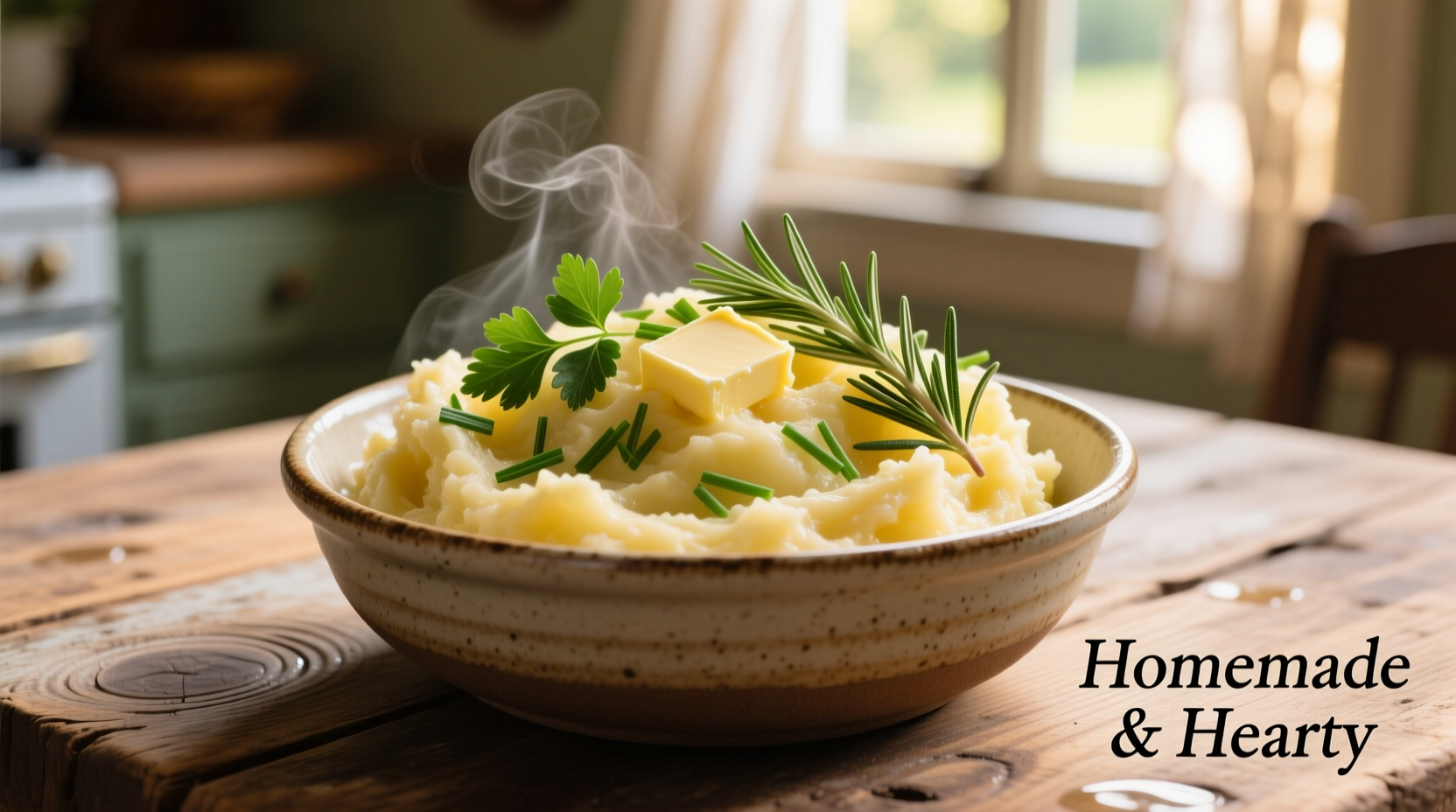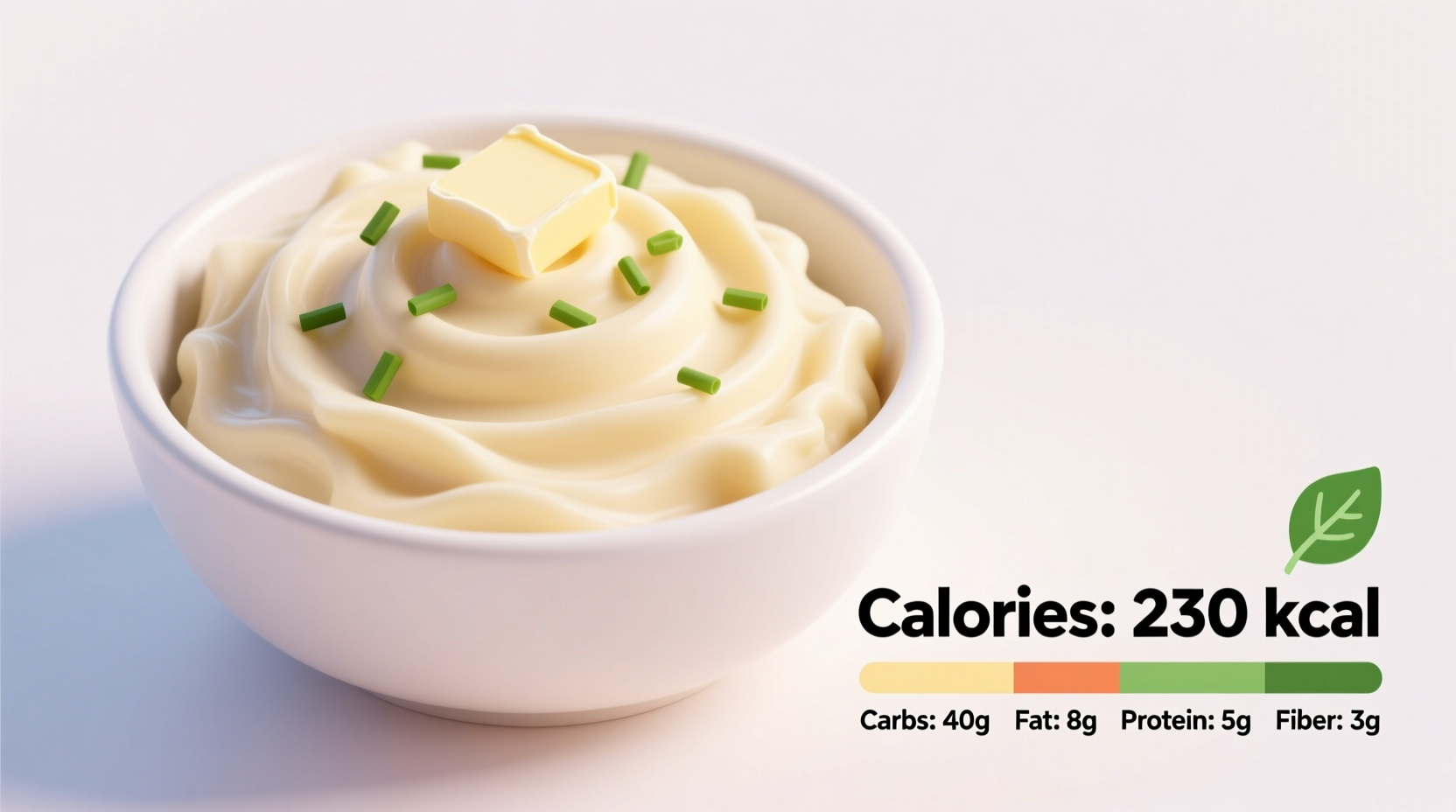Understanding exactly how many calories in a mashed potato dish contains is crucial for meal planning and dietary management. The calorie count varies significantly based on preparation methods and ingredients, making it essential to know what factors influence the final nutritional profile.
What Determines Mashed Potato Calorie Content
When calculating calories in mashed potatoes nutrition facts, three primary factors affect the final count:
Potato Type and Preparation
The base ingredient matters more than many realize. Russet potatoes (the most common variety for mashing) contain about 168 calories per medium potato (173g). Boiling removes some starch but doesn't significantly reduce calories. The USDA FoodData Central confirms that 100g of boiled potatoes contains approximately 87 calories before any additions.
Added Ingredients: The Game Changer
This is where most calorie variations occur. A traditional recipe with 1/4 cup of whole milk and 2 tablespoons of butter adds approximately 200 extra calories to the entire batch. Restaurant versions often double these amounts, dramatically increasing the mashed potatoes with milk and butter calories.
Portion Size Reality Check
What constitutes "one serving" varies widely. While standard nutritional data uses 1 cup (210g) as a reference, restaurant portions often range from 1.5-2 cups, effectively doubling the calorie count without consumers realizing it.
| Preparation Method | Calories Per Cup (210g) | Primary Calorie Contributors |
|---|---|---|
| Basic (potatoes only) | 160 | Natural potato starch |
| Traditional home recipe | 237 | Potatoes (70%), butter (20%), milk (10%) |
| Restaurant-style | 350-420 | Butter (40%), cream (30%), potatoes (30%) |
| Healthy alternative | 185 | Potatoes (80%), Greek yogurt (15%), skim milk (5%) |
This mashed potatoes calorie comparison chart demonstrates why understanding preparation methods is essential when tracking how many calories in a mashed potato serving you're actually consuming. The USDA's National Nutrient Database provides these standardized measurements that help create accurate dietary records.
Nutritional Context: Beyond Just Calories
While tracking mashed potatoes nutrition facts, consider these additional nutritional elements:
- Carbohydrates: One cup contains approximately 37g of carbs, mostly from natural potato starch
- Protein: Modest 5g per serving, which increases slightly when using milk or dairy alternatives
- Fiber: About 3g when skins are included (peeled versions drop to 2g)
- Vitamins: Significant potassium (926mg) and vitamin C (25mg) content
According to the Harvard T.H. Chan School of Public Health, potatoes themselves have a high glycemic index (around 78), but adding fat through butter or cream can slow digestion and moderate blood sugar response. This nutritional context helps explain why mashed potatoes with milk and butter calories might be metabolized differently than plain boiled potatoes despite similar calorie counts.

Practical Calorie Management Strategies
If you're monitoring your intake but don't want to eliminate this comfort food, consider these evidence-based approaches:
Smart Ingredient Substitutions
Replacing half the butter with plain Greek yogurt maintains creaminess while reducing calories by approximately 30%. The Academy of Nutrition and Dietetics recommends using low-sodium vegetable broth to add moisture without extra calories. For the creamiest texture with minimal calories, try blending in roasted cauliflower (about 25 calories per cup) which adds fiber and nutrients.
Portion Control Techniques
Use a measuring cup when serving to avoid unintentional overeating. Research shows that using smaller plates (9-inch instead of 12-inch) naturally reduces portion sizes by 20-25% without diminishing satisfaction. Pair your mashed potatoes with lean protein and non-starchy vegetables to create a balanced meal that keeps you full longer.
Restaurant Ordering Intelligence
When dining out, request "light on the butter" or ask for the potatoes "prepared with minimal added fats." Many establishments will accommodate these requests. Be aware that "loaded mashed potatoes" or "creamy mashed potatoes" menu descriptions typically indicate significantly higher calorie counts than standard preparations.
When Calorie Counts Might Vary Significantly
Several contextual factors can push restaurant mashed potatoes calorie count beyond standard estimates:
- Added mix-ins: Bacon, cheese, or sour cream can add 50-150+ calories per serving
- Cream alternatives: Heavy cream contains 822 calories per cup versus 149 for whole milk
- Butter quality: European-style butter has higher fat content (82-86% vs. 80%)
- Restaurant portions: Often 1.5-2x larger than standard 1-cup servings
These context boundaries for mashed potato calories explain why the same dish can range from 160 to over 500 calories depending on preparation. The American Journal of Clinical Nutrition emphasizes that these variables make generic calorie estimates potentially misleading without specific preparation details.
Creating Balanced Meals with Mashed Potatoes
For most adults, a standard 1-cup serving of traditional mashed potatoes represents about 12% of a 2,000-calorie daily diet. To create a nutritionally balanced meal:
- Pair with 3-4 ounces of lean protein (chicken, fish, or tofu)
- Add 1-2 cups of non-starchy vegetables (broccoli, green beans, or asparagus)
- Include a small side salad with vinaigrette dressing
This approach ensures you're getting a complete range of nutrients while enjoying your mashed potatoes without excessive calorie intake. The Dietary Guidelines for Americans recommends that starchy vegetables like potatoes should account for no more than 5-6% of your total daily calories for optimal health.











 浙公网安备
33010002000092号
浙公网安备
33010002000092号 浙B2-20120091-4
浙B2-20120091-4